
Keeping Alive the Flame of Techniques and Passion for Over 400 Years: Passing the Baton in the Metalworking Town of Tsubame-Sanjo

山田 立
Yamada Ritsu
Tsubame-sanjo [Niigata]
Yamada Ritsu
Born in 1973 in Niigata Prefecture. After working in a department store within the prefecture, Yamada was drawn to the world of craftsmanship and joined Gyokusendo, one of the representative companies of Tsubame-Sanjo. Later, he established The Tsukuru Corporation, promoting craft tourism and contributing to the overall development of the Tsubame-Sanjo region.
The Tsubame-Sanjo area in Niigata Prefecture has garnered attention as a town of craftsmanship. Particularly since 2013, the factory tour event "Tsubame-Sanjo Festival of Factories" has become a major attraction, drawing over 50,000 visitors from both inside and outside the prefecture, and even internationally. Mr. Yamada Ritsu, the CEO of Tsukuru Corporation, who chaired this festival, says, "We haven't started anything new, just continuing the techniques and passions rooted in our community." This piece delves into Mr. Yamada's perspective on inheriting the DNA of Tsubame-Sanjo.
Captivated by the Potential of Tsubame-Sanjo:From a Department Store Buyer to the World of Craftsmanship
“My family originally owned a ceramics shop, so I’ve always been interested in tableware,” begins Mr. Yamada. After graduating from university, he worked as a buyer in a local department store. Yet, his interest in tableware never waned.
“I dealt with various themes and products as a buyer, but I always harbored the desire to work with tableware since joining the company. And about ten years into my career, I finally achieved this goal.”
Achieving his dream of becoming a tableware buyer, he discovered a different passion.
“There’s no doubt about the allure of carefully crafted tableware. However, interacting with the artisans, I became fascinated by the world of craftsmanship and artisan skills. Gradually, I found myself wanting to be part of that world.”
He eventually left the department store and in 2010, joined Gyokusendo, a longstanding Tsubame-Sanjo company specializing in hammered copperware, with a history spanning over 200 years.
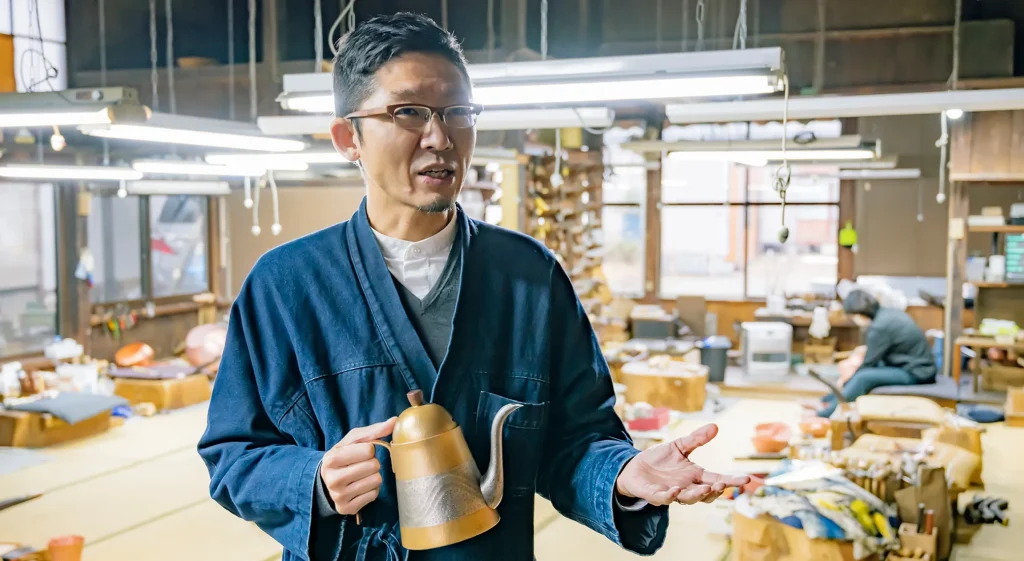
His role at Gyokusendo is “banto”. His main role is to be in charge of the sales and planning department. He spent about one-third of the year traveling outside of the prefecture to participate in exhibitions and sales at department stores throughout Japan. Then came an event that changed Yamada’s attitude toward the Tsubame-Sanjo area.
“The ‘Festival of Factories’ began in 2013. It was an initiative to open local factories to the public, allowing them to experience the manufacturing sites and increase interest in factories, craftsmanship, and creation. It has now become a major local tourist attraction, drawing visitors from inside and outside the prefecture, and even internationally.
Gyokusendo, where I work, is rare in the region for completing its manufacturing in-house. Typically in Tsubame-Sanjo, different stages of production are handled by different companies. The festival allowed me to witness firsthand the technical prowess of Tsubame-Sanjo that I hadn’t seen within my own company.”
A few years after first getting involved in the festival, Mr. Yamada became its chairman. The event has gained increasing attention over the years, leading to more people moving to Tsubame-Sanjo to become craftsmen and more factories opening their doors regularly. “I feel the regional consciousness is gradually changing,” he says.
Continuously Challenging to Meet the Demands of the Times:The Identity of Tsubame-Sanjo
“The roots of Tsubame-Sanjo’s craftsmanship can be traced back to the Edo period(1603 – 1868) when farmers started making Japanese nails as a side job. Over 400 years, we have continued crafting, constantly challenging ourselves with new endeavors,” says Mr. Yamada, sharing the DNA of Tsubame-Sanjo’s craftsmanship.
“For example, the discovery of high-quality copper in the nearby Maze-dozan Copper Mine led to a shift from iron to more easily workable copperware. As the demand for Japanese nails declined with the popularity of Western nails, craftsmen began creating files, smoking pipes, and other items. Even when the pipe industry waned with the rise of rolled tobacco, the technology used for making kettles was adapted to create spoons and other tableware. The region has continually adapted and innovated in response to the changing times and needs.”
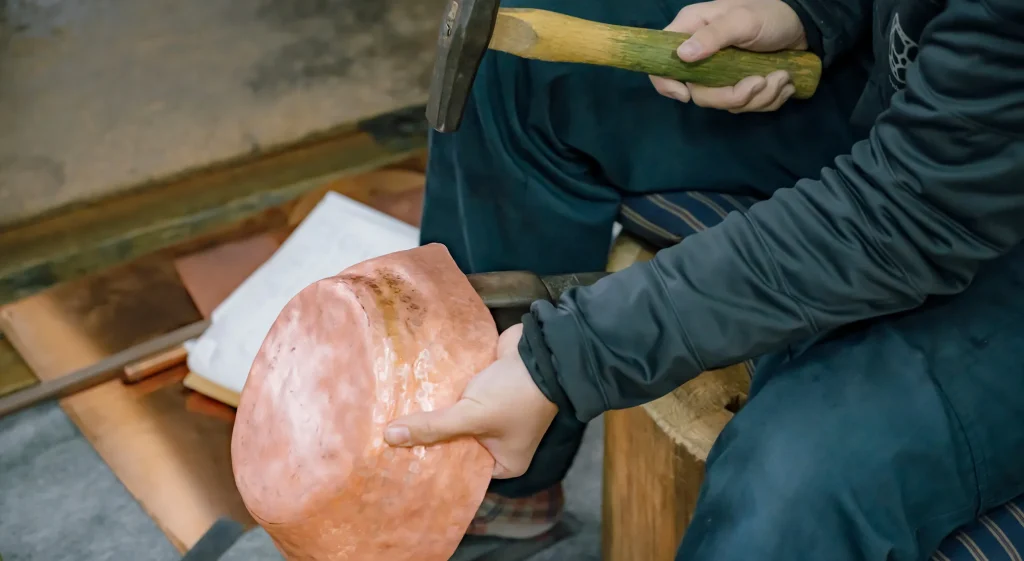
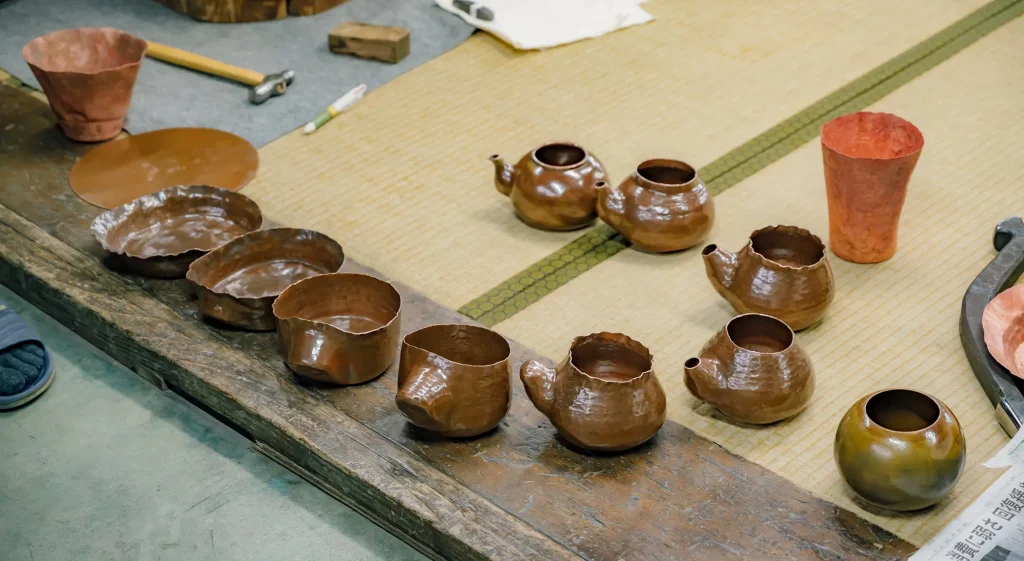
Moreover, Mr. Yamada notes unique features that set Tsubame-Sanjo apart from other manufacturing areas.
“One is the diversity of professions. While most manufacturing areas specialize in specific products, Tsubame-Sanjo, while centered around metalworking, boasts a variety of materials and items. This diversity ensures that each factory visit feels different and never gets boring.
Another feature is the abundance of products related to food. Since these are everyday items, people easily relate to them, knowing, owning, using, or desiring them. Visiting Tsubame-Sanjo, you can see the behind-the-scenes of these products and then use them in local restaurants, knowing their background. It’s a rich experience to touch and feel these items, understanding who made them and how.”
“Tradition is not about worshiping the ashes but keeping the flame alive.”
When asked why he dedicates himself to the Tsubame-Sanjo area, Mr. Yamada responds, “My only goal is to pass on the techniques and passions of this land to the next generation. Gustav Mahler, the Austrian composer, once said, ‘Tradition is not about worshiping the ashes but keeping the flame alive.’ This means not just showcasing traditions as nostalgia about great people or history but continuously connecting the ongoing practices and living techniques to the next generation.”
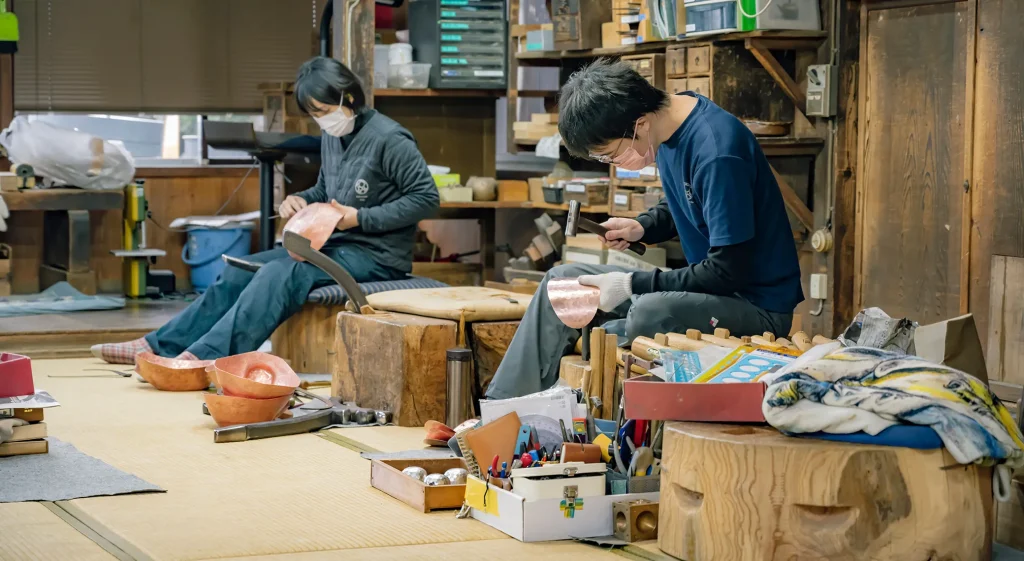
“To do this, we, the residents of the region, need to understand the context of ‘Tsubame-Sanjo has continued this way.’ We need to share what we find fascinating with those who haven’t discovered its charm yet. By doing so, we can pave the way forward and keep the flame burning.”
What future lies ahead for Tsubame-Sanjo, which has kept its flame burning? What does Mr. Yamada envision? He shares his thoughts.
“I hope to create a situation where people interested in craftsmanship and design feel it’s almost obligatory to visit Tsubame-Sanjo at least once. It doesn’t have to be everyone on the planet, just those who are genuinely interested. If it becomes a region people frequently visit or travel to with friends, that would be great. There’s still much room for growth in the region. We want to increase the number of factories that are always open and people who connect visitors to the region. There’s no end goal in town planning; we want to keep moving forward, tackling each challenge as it comes.”
Finally, we asked what he wants visitors to Tsubame-Sanjo to experience.
“I want them to immerse themselves in the world of craftsmanship. To converse with active artisans, touch the products, and try making something themselves… to savor the activities unique to Tsubame-Sanjo with all five senses. By experiencing firsthand how difficult it is and the incredible skills of the artisans, their perception of the products will surely change.”
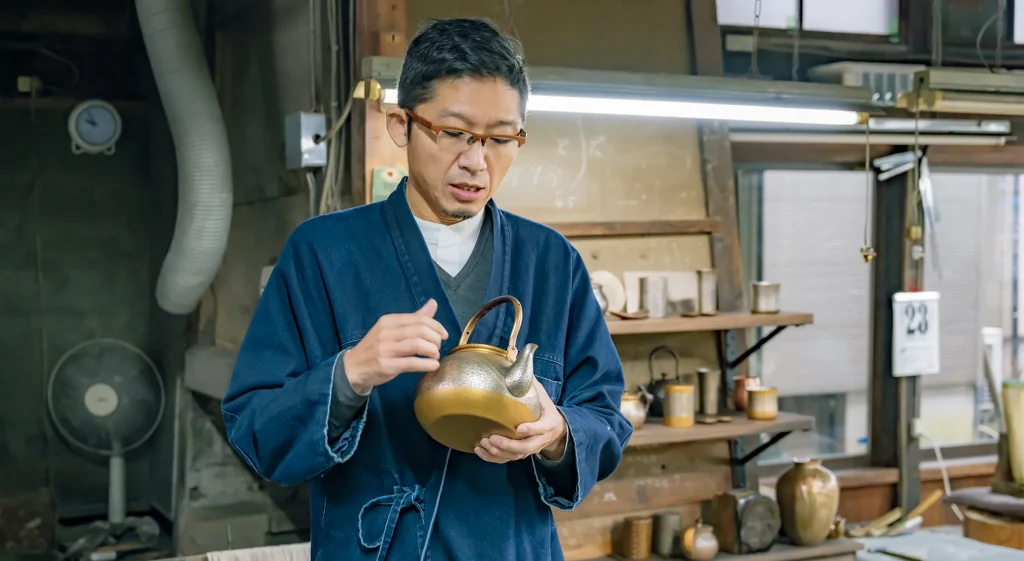
Connecting in this Region:
The craftsmanship of Tsubame-Sanjo has continued for over 400 years. What passions and techniques have been honed, and what history has been traversed? I hope visitors can feel the essence of this while connecting the charm of the Tsubame-Sanjo region to the future.
